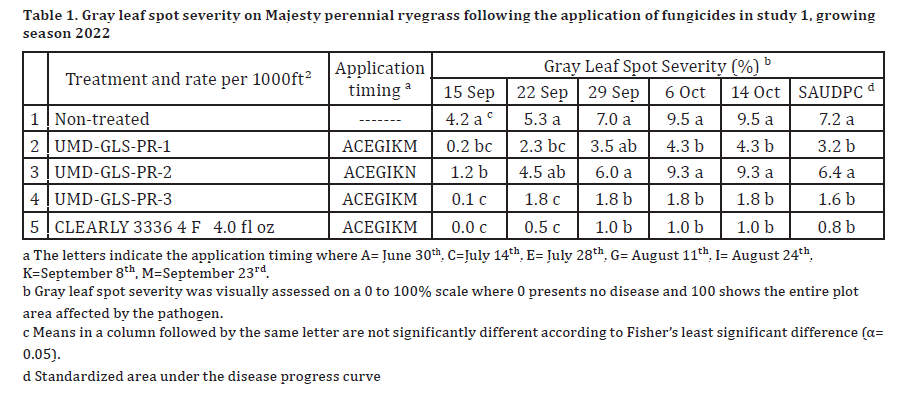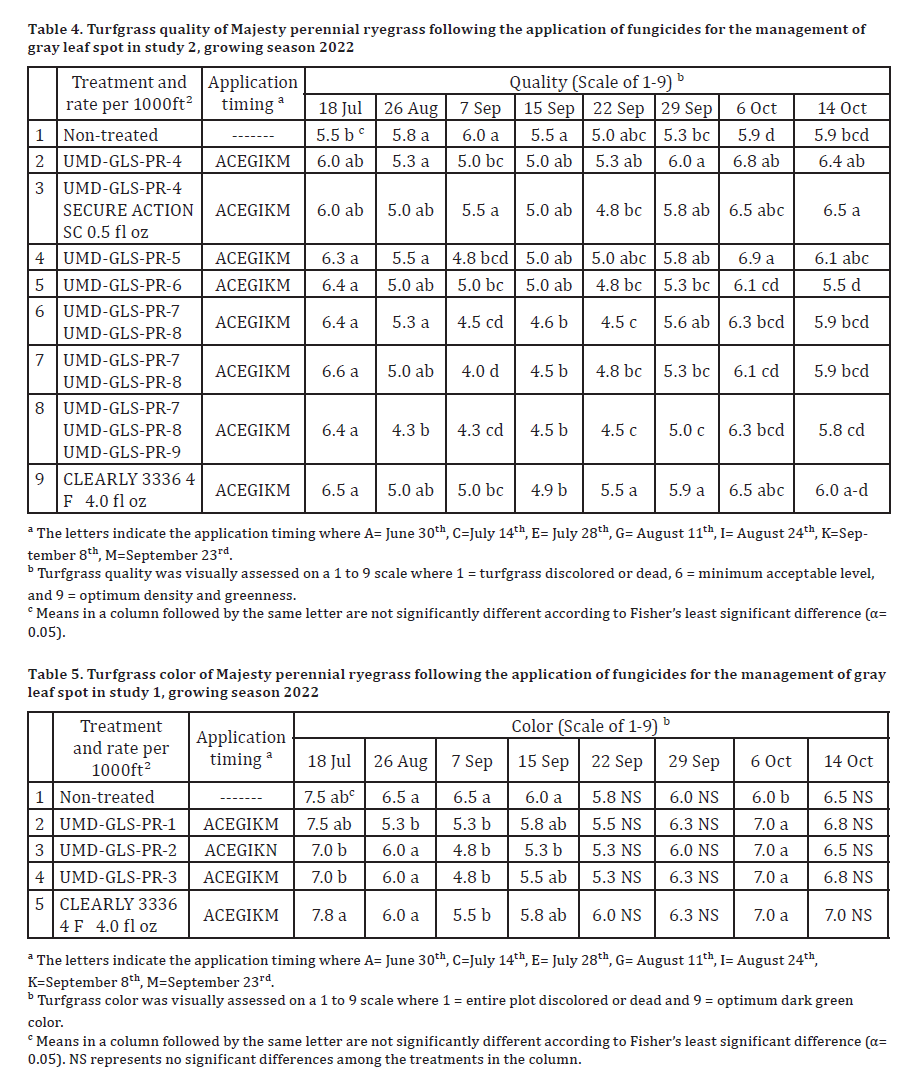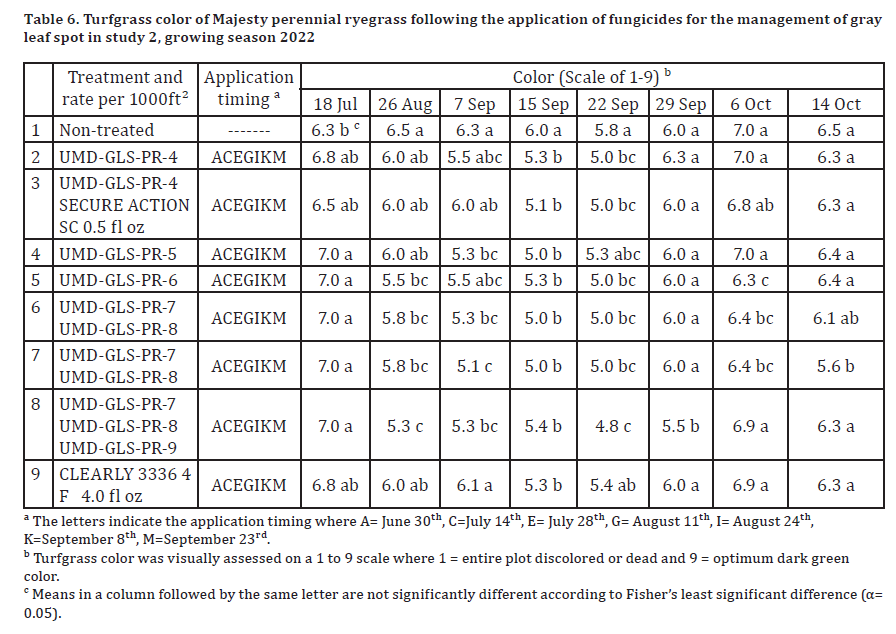Evaluation of Experimental Fungicides for the Management of Gray Leaf Spot (Pyricularia grisea)
Fereshteh Shahoveisi, Department of Plant Sciences and Landscape Architecture, University of Maryland, College Park
Gray leaf spot (caused by the fungus Pyricularia grisea) could be devastating to several turfgrass species including perennial ryegrass and tall fescue. Two field studies were conducted at the Paint Branch Turfgrass Facility (University of Maryland) to evaluate the efficacy of experimental fungicides in the management of the disease. Perennial ryegrass cv. Majesty with a 3-inch height of cut was used to test fungicides; non-treated and CLEARY 3336 4 F fungicide were included as negative and positive controls, respectively.
In both studies, treatments were applied approximately every 14 days beginning June 30th until September 23rd, 2022. A total of 1 gal /1000 ft² fungicides in 3×6 feet plots were sprayed at each application using a CO2 backpack sprayer equipped with a Teejet AI9504E nozzle. A randomized complete block design with four replications was used. The natural infections did not occur and therefore plots were inoculated with the spore suspension (4000 spore/ml) on September 10th. Urea fertilizer was applied three times (0.9 lb/ 1000 ft² on June 13th and July 11th, and 0.5 lb/ 1000 ft² on July 25th). Further, plots were sprayed with Prostar® (or Pedigree) and Emerald® fungicides on June 30th, July 13th, July 25th, August 8th, and August 24th for the management of brown patch and dollar spot, respectively. Gray leaf spot disease severity (percentage) was measured every week after the initiation of the disease from September 15th until October 14th. Quality and color (1-9 scale) were measured multiple times prior to disease establishment as there were quality and color reductions in treated plots starting in late August. Analysis of variance and Fisher’s least significant difference (LSD) procedure at α= 0.05 were used to compare the treatments in their efficacy in managing gray leaf spot and improving the quality and color of turfgrass. Rank transformations were used for non-parametric data including quality and color.
Despite the inoculation, the disease pressure and symptoms stayed at a low level. However, significant differences were detected between non-treated and most of the treatments in both studies. The only treatment that was not significantly different from the non-treated throughout the disease rating period was UMD-GLS-PR-2 in study 1. The rest of the treatments successfully managed the disease with the standardized area under the disease progress curve (SAUDPC) of less than 3.2% in study 1 and 0.6% in study 2.
No phytotoxicity was observed in the first month of the fungicide applications but later in the season (mid to late August) yellowing was observed in the treated plots while non-treated looked better in color and quality. After examining the leaves, there was a high level of leaf spot spores and lesions present on the leaves. The leaf spot symptoms started to decrease in late September. High pressure of leaf spot resulted in a lower quality and color rating during this period. In study 1, there were no significant differences between the quality of treated and non-treated plots after the September 22nd rating. In study 2, the non-treated plots had lower quality and density during this period due to the gray leaf spot disease symptoms; however, the differences were not significant compared to most of the treated plots. The color of plots varied after September 22nd rating; the non-treated plots in study 1 had lower ratings for color where the differences were significant only on the October 6th rating. In study 2, most of the plots had above minimum acceptable color (6 on a 1- 9 scale) after September 29th regardless of treatments. In general, the color and quality were affected by leaf spot symptoms until late September, and improvements started in early October.



